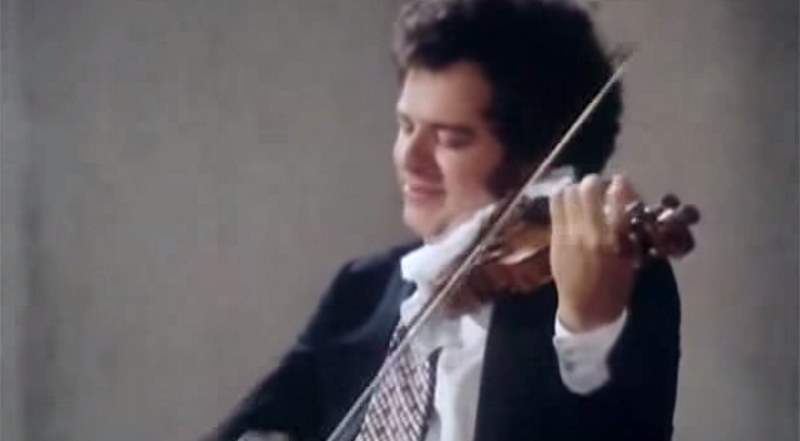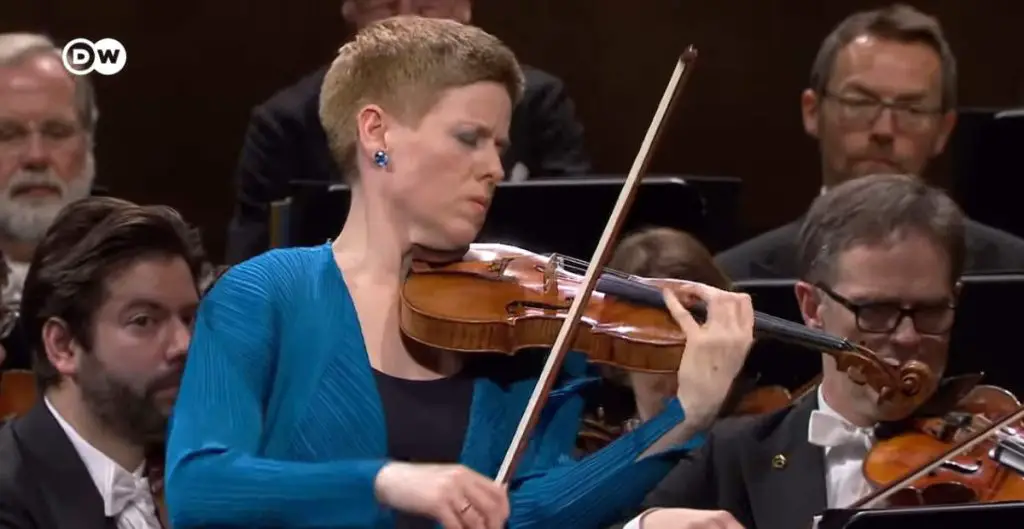Accompanied by the Berliner Philharmoniker (Berlin Philharmonic Orchestra), Israeli-American violinist Itzhak Perlman performs Ludwig van Beethoven’s Violin Concerto in D major, Op. 61. Conductor: Daniel Barenboim. Recorded live in 1992 in Berlin.
Beethoven’s Violin Concerto
Ludwig van Beethoven’s the only violin concerto, the Op. 61 was composed in 1806. Beethoven wrote the concerto for his colleague and close friend Franz Clement (November 17 or 18?, 1780 – November 3, 1842), the Austrian violinist, pianist, composer, conductor of Vienna’s Theater an der Wien. He was a leading violinist of the day.
The work was premiered on 23 December 1806, violin played by Franz Clement. The performance was unsuccessful. Beethoven completed the work within a few weeks but only shortly before the concert. He finished the solo part so late that Clement had to sight-read part of his performance. So, for some decades the work languished in obscurity and was very rarely performed until revived in 1844 by the Hungarian violinist, conductor, composer, and teacher Joseph Joachim (28 June 1831 – 15 August 1907). Since then it has become one of the best-known violin concertos.
The work is scored, in addition to the solo violin, for flute, two oboes, two clarinets, two bassoons, two horns, two trumpets, timpani, and strings. It is in three movements:
- Allegro ma non troppo (D major). The first movement is written in classic sonata form, including exposition, development, and recapitulation (with coda). Usually t over 25 minutes in length, the first movement is notable as one of the most extended in any of Beethoven’s works, including the symphonies.
- Larghetto (G major). It is a group of variations on two themes. Free from the dramatic unrest of the first movement, the second is marked by a tranquil, organic lyricism. Toward the end, an abrupt orchestral outburst leads into a cadenza, which in turn takes the work directly into the final movement.
- Rondo. Allegro (D major). It is a hybrid form sometimes known as a rondo sonata, which includes elements of both musical forms. It incorporates a cadenza composed later by Austrian-born violinist and composer Fritz Kreisler (February 2, 1875 – January 29, 1962).
Sources
- Violin Concerto (Beethoven) on Wikipedia
- Violin Concerto in D Major, Op. 61 on Encyclopedia Britannica
- Ludwig van Beethoven Violin Concerto in D major, Op. 61 on allmusic.com


